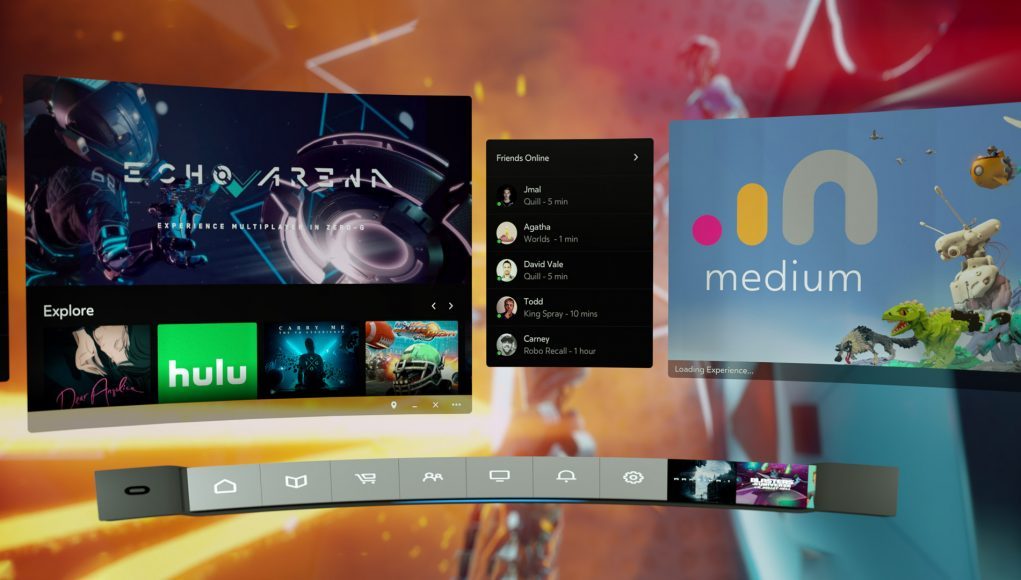Oculus Rift users playing games on SteamVR will soon be able to more fluidly access Oculus Dash, part of the Rift Core 2.0 update which gives users an overlay menu allowing them to access social features, browse their desktop, and more.
The latest beta version of SteamVR now properly supports in-game rendering of Oculus Dash for players using Rift headsets, according to release notes. Instead of taking SteamVR players into a blank room when launching Dash, the update allows the floating menu to appear directly inside of the current VR application, allowing for more fluid and immersive use. Users can pin various windows from Dash so that they appear persistently inside of a VR application while in use.
SteamVR applications updated to the latest version of the OpenVR SDK will allow for proper depth compositing between Dash and the currently running application.
Players opted into the SteamVR beta will have access to the update function right away. Those running on the stable branch will likely see it incorporated in the next update. Only Rift users can access Dash since it’s part of Oculus’ platform.
The update shows Valve’s continued commitment to supporting the Rift on SteamVR with the hopes of maintaining an open VR platform for users and developers.
Like SteamVR’s overlay menu, Dash gives players easy access to platform functions like accessing friends list and Oculus store. It also gives players access to the applications on their desktop without taking off their headset thanks to the Oculus Desktop feature. Dash launched in beta as part of the Rift Core 2.0 update back in December.







